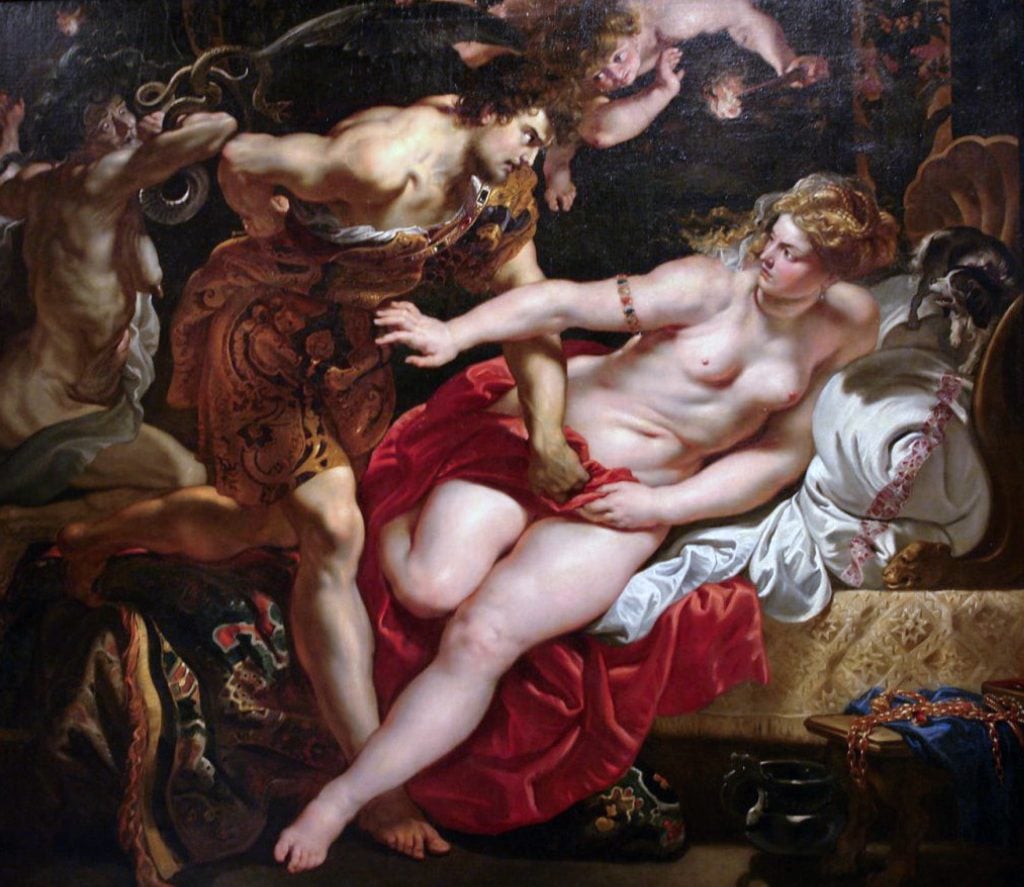Law & Politics
A Rubens Painting, Allegedly Stolen During World War II, Remains Embroiled in a Decades-Long Dispute
The painting once hung in the Rheinsberg Palace.

The painting once hung in the Rheinsberg Palace.

Adam Schrader

Editor’s note: An earlier version of this article reported that a Peter Paul Rubens painting, long thought lost after World War II, was seized in Moscow. This is incorrect: the work was seized in 2003, not recently, per The Art Newspaper Russia. We regret the error. The story below has been updated to reflect how the ownership of the work remains in dispute.
A battle over the ownership of a painting by the Flemish artist Peter Paul Rubens, which disappeared during World War II, continues to wind its way through court.
The oil painting, Tarquinius and Lucretia (1610–11), was likely acquired by King Frederick I of Prussia and had hung in a gallery at the Sanssouci Palace in Potsdam, Germany, before the war. It was moved to Rheinsberg Palace in 1942 to protect it from damage but was taken from the palace in 1945. The painting depicts the mythological rape of a Roman noblewoman before her subsequent suicide and is considered to be one of the most significant works still missing from the Sanssouci gallery.
In 1999, a Russian businessman Vladimir Logvinenko acquired the painting and had it restored, Deutsche Welle reported. The work was seized in 2003 in Moscow after an official request for legal assistance and with top-level diplomacy with Russia, according to a news release from the Stiftung Preussische Schlösser und Gärten (SPSG), a public foundation created after the reunification of Germany in 1994 that administers historic buildings in the area.
“This is the first step towards recovering this highly important masterpiece not only for the Prussian palaces, but also for the entire art world,” the foundation’s director-general Hartmut Dorgerloh said in a statement at the time.
The standoff between Logvinenko and the German foundation had began, according the Chicago Tribune, when a Russian man sent an email asking the SPSG if it would like the painting back. The Russian dealer allegedly hoped to secure 25 percent of the painting’s value, estimated at the time around $90 million, wired to a Swiss bank account.
“When we got the e-mail, it came as a big surprise because we had no idea that the painting still existed,” Dorgerloh said at the time. “Our first answer was that we were really, really interested.”
Russian authorities had reportedly seized the work then but did not hand it over to their German counterparts. The following year, the Guardian reported that the Office of the Prosecutor-General of the Russian Federation ruled that Logvinenko was the rightful owner because he didn’t break any Russian law in acquiring it.
However, on a 2021 appeal to have his rights to the artwork recognized, Logvinenko was told by the Potsdam Regional Court in Germany that he “is not the owner of the painting.”
The German court said the legal dispute was subject to Russian law, not German law, but made its determination based on “the relevant Russian law,” noting that Logvinenko did not acquire it through a legal or good-faith transaction, and did not inherit it.
According to DW, the ownership dispute could embroil the courts for another two decades.
More Trending Stories:
Art Dealers Christina and Emmanuel Di Donna on Their Special Holiday Rituals
Stefanie Heinze Paints Richly Ambiguous Worlds. Collectors Are Obsessed
Inspector Schachter Uncovers Allegations Regarding the Latest Art World Scandal—And It’s a Doozy
Archaeologists Call Foul on the Purported Discovery of a 27,000-Year-Old Pyramid
The Sprawling Legal Dispute Between Yves Bouvier and Dmitry Rybolovlev Is Finally Over